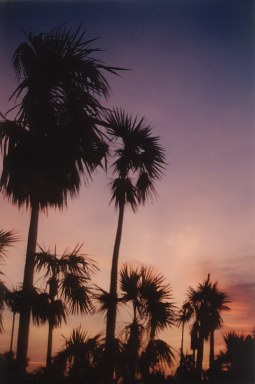--Type Title Here-- | home
More On Cuban Birds - New!
GiTMO Birds
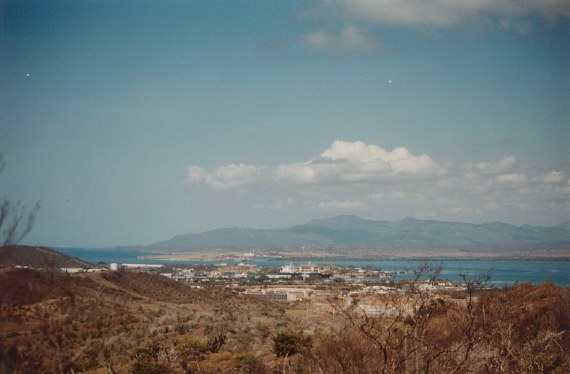
By: Tyler L. Hicks
With all the media attention given to the US Naval Base at Guantanamo Bay, Cuba recently. I thought I might show you a side of GiTMO that you won't see on television. From February to July 2001 I worked as a banding intern for The Institute for Bird Populations in their tropical MAPS (Monitoring Avian Productivity and Survivorship) programs. During my five month stay I recorded 129 species on the base.
Guantanamo Bay is located on the southeastern "foot" of Cuba. The base is roughly 45 square miles in size and is divided in two by the inlet to the bay which extends into Cuba proper. The climate of the base is semiarid desert, very similar to that of coastal southern California. The leeward (west) side of the bay is comprised of grasslands, tidal flats, palm-scrub forests, and mangrove forests that border the bay and the Guantanamo River. The coast is made up of limestone cliffs and rocky shores. The windward (east) side of the bay is mountainous and covered primarily with thorn-scrub forests. The residential areas here are planted with imported and native vegetation and is perhaps the most lush habitat you can find on the base. The windward side also contains extensive patches of a fascinating Nopalea cactus forests. The bay and coastal flora are nearly identical to that of the leeward side.
The abundance of birds on the base is surprising. The US Navy has done an exceptional job of preserving a majority of the base's natural habitat. The base is home to not only a diverse array of birds but is one of the last remaining refuges for the highly endangered Cuban Rock Iguana and hutia, a large cat sized rodent endemic to Cuba. The bay is also home to a sizable population of West Indian manatees.
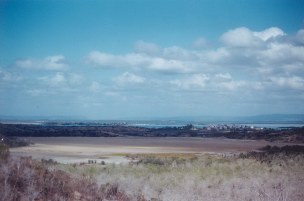
Constantly cruising the bay are Brown Pelicans, a variety of terns including Gull-billed, Sandwich, Royal, Caspian, and Least, as well as the prehistoric looking Magnificent Frigatebird. On the rocky shores Ruddy Turnstone can be found flipping rocks and the occasional flock of Sanderlings can be found dodging the swells. Above, Wilsonís Plovers nest on the grassy ledges of the seaward cliffs. On one occasion an elegant and endangered White-tailed Tropicbird was seen from these cliffs and could possibly be breeding in a restricted area meant to protect nesting sea turtles. On the tidal flats a large array of shorebirds can be found during migration but Black-necked Stilts and Snowy Plovers remain to breed year-round. In Cuba the Snowy Plover is considered an endangered species and GiTMO is one of three locations in which it breeds in Cuba. On the flats and the nearby brackish waters waders abound including nine varieties of egrets and herons, White Ibis, and Roseate Spoonbill. A Greater Flamingo was recorded on one occasion, and the odd pair of White-cheeked Pintail can be found in this habitat as well.
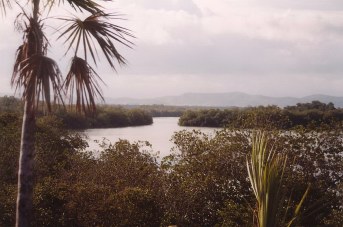
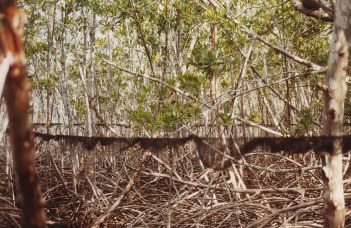
The mangroves form an almost impenetrable barrier and are home to a remarkably large number of neotropical migrants and mosquitoes. Cape-may, Prairie, Black-throated Blue, Black and White, Yellow (resident and migrant), Blackpoll, Palm Warbler and Northern Waterthrushes are just are few to mention. On one occasion a Connecticut Warbler was captured in our mangrove mist-nets. This represents one of very few records for this species in Cuba despite the fact that it is believed that nearly the entire population of Connecticut Warblers migrates thru the West Indies during spring and fall! Above the mangroves Cuban Martins and Cave Swallows feast upon the abundant amount of airborne protein that haunts these mangroves. Basking on the snags, Anhingas and Neotropic Cormorants air dry their wings in the Caribbean breeze, and White-crowned Pigeons call from the canopy. Gundlachís Hawk, a Cuban accipiter about the size of a Cooperís Hawk, cruises these forests in search of itís next meal. Cuban Pewees are often heard and are easily called in with even a poorly whistled imitation. During late April Gray Kingbirds and Black-whiskered Vireos arrive and add to the diverse avifauna of the mangroves.
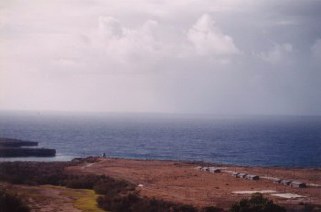
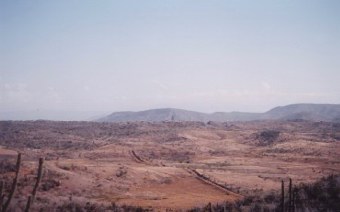
Not all the species on the base are restricted by habitat. Many if not most of the species on the base are habitat generalists. American Kestrels, both the light and dark phases, can be found on the baseball fields. Antillean Nighthawks and Palm-swifts can be seen practicing their acrobatic maneuvers in the skies over the barracks. West Indian Woodpeckers, the Caribbean version of a Red-bellied Woodpecker, can be found nearly anywhere with anything that resembles a tree. While the Cuban Green Woodpeckers, which must be the jewel of the woodpecker family, are nearly as common. The tot-tot-tot calls of Cuban Todies can be heard all around the base. These multicolored gems are just one of five species of todies in the world, all of which are endemic to the Caribbean. What is even more remarkable about Cuban Todies is that their eye color varies. Most individuals have blue eyes, while others may have brown or gray. Some birds even had a combination of blue and brown, with the upper region of the eye being blue and the lower being brown. It is not yet known but this may hold a clue to the age of these birds. LaSagraís Flycatchers can be found with ease as well as the amazing Red-legged Thrush. Cuban Grassquits, the most abundant of the Cuban endemics found on the base, can be found in flocks of up to fifty birds foraging in parking lots and lawns. The grassquits seemed to fill the niche of House Sparrows, even though there were small numbers of House Sparrows present on base. Cuban Blackbirds can be found, where else, but parking lots and around trash dumpsters. Tawny-shouldered Blackbirds, the Cuban equivalent of a Red-winged Blackbird, can be found in the residential areas and on the golf course.
Red-tailed Hawks, Crested Caracaras, and Turkey Vultures can be seen using the updrafts coming off the scrub-forest slopes of the windward side. Down below a small but efficient killer, the Cuban Pygmy-Owl, whistles itís monotonous song. The bizarre Great Lizard Cuckoo, a strange combination of a roadrunner and a Yellow-billed Cuckoo, lets out a guttural ka-kow which sounds nothing like a bird, and a noisy family group of Smooth-billed Anis cruises by on a routine check of their territory. Cuban Vireos abound on the thorn scrub slopes, as well as the energetic and highly localized Cuban Gnatcatcher. A strange looking warbler can be found here as well. The Oriente Warbler has one of the largest bills of any warbler and is more vireo-like than warbler-like. These forests are where the elusive Bee Hummingbird, the smallest bird in the world, can be found. The Bee Hummingbird is seasonal on GiTMO and I only got a glimpse of an insect sized bird buzzing over my head.
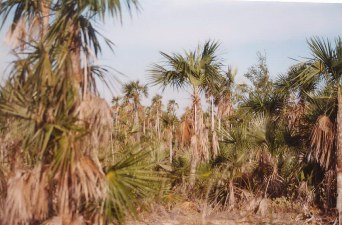
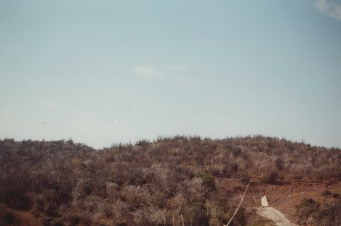
In the palm and grassland mosaic a few species can be found that are found no where else on the base. Helmeted Guinefowl abound in the grasslands. Introduced from Africa centuries ago, during the slave trade, they have established wild populations in areas where hunting pressure is low. On one occasion a pair of Lark Sparrows were found and represent the fifth and sixth records for this species in Cuba(1). Short-eared Owls cruise these grasslands and the calls of Barn Owls keep the US Marines night watchmen on their toes. Black-cowled Orioles can be found weaving their nests among the palms and keeping an eye on the Shiny Cowbirds that recently arrived in Cuba during the 1980ís. The effects of the cowbird's arrival remains to be seen.
While I haven't covered all of the species that occur on base I hope I have given you an insight to the avifauna of Americas Cuba. The diversity of the flora and fauna of the base is remarkable and the lengths that the Navy has gone through to preserve it is commendable. Hopefully in the near future relations with Cuba will improve and we will all be able to enjoy the incredible avifauna of our island neighbor, Cuba.
(1) Garrido O. H., and A. Kirkconnell. 2000. Field Guide to the Birds of Cuba. Comstock Publishing Associates, Ithaca.
(2) Raffaele H., Wiley J., Garrifo O., Keith A., and J. Raffaele. 1998. A Guide to the Birds of the West Indies. Princeton University Press, Princeton.
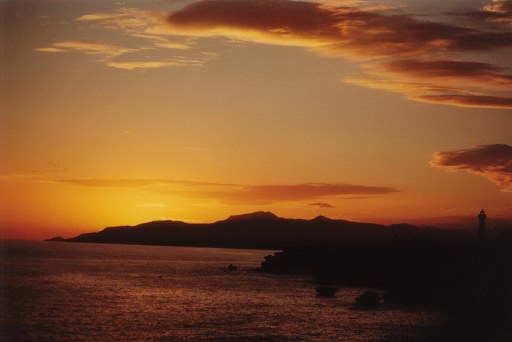
THE
|
BIRDS
|
OF
|
GUANTANAMO
|
BAY
|
CUBA
|
Abundance Key is based on correct habitat for each species. For example Ruddy Turnstone will not be common in desert.
|
 |
 |
A - Abundant - Seen nearly everyday - 99%
|
||
C - Common - Seen most days - 75%
|
||
FC - Fairly common - 50%
|
||
UC - Uncommon - 25%
|
||
R - Rare - less than 10% of the time
|
||
X -Accidental - only a few records or encounters
|
||
Species
|
Abundance
|
Notes
|
White-tailed Tropicbird
|
X
|
One seen from leeward cliffs - Amy Hammond
|
Brown Pelican
|
C
|
|
Neotropic Cormorant
|
UC
|
|
Anhinga
|
FC
|
|
R-C
|
Increased throughout summer
|
|
Great Blue Heron
|
C
|
|
Great Egret
|
C
|
|
Snowy Egret
|
A
|
|
A
|
||
Tricolored Heron
|
C
|
|
Reddish Egret
|
FC
|
80% White Morph
|
Cattle Egret
|
C
|
|
Green Heron
|
C
|
|
C
|
||
White Ibis
|
FC
|
|
Roseate Spoonbill
|
R
|
|
A
|
||
Greater Flamingo
|
X
|
One seen of leeward salt flats
|
Green-winged Teal
|
UC
|
|
R
|
||
Northern Shoveler
|
UC
|
|
Osprey
|
R
|
|
Gundlach's Hawk
|
R
|
|
C
|
||
FC
|
||
FC
|
||
Merlin
|
X
|
|
R
|
||
A
|
Introduced
|
|
Clapper Rail
|
C
|
|
Common Moorhen
|
R
|
|
American Coot
|
FC
|
|
Black-bellied Plover
|
R
|
|
American Golden-Plover
|
X
|
|
Snowy Plover
|
UC
|
Snowy Plover nest Endangered in Cuba
|
Wilson's Plover
|
UC
|
|
Semipalmated Plover
|
FC
|
|
Killdeer
|
C
|
|
C
|
||
Greater Yellowlegs
|
A
|
|
Lesser Yellowlegs
|
C
|
|
Solitary Sandpiper
|
UC
|
|
Willet
|
UC
|
|
Spotted Sandpiper
|
A
|
|
C
|
||
Sanderling
|
C
|
|
Semipalmated Sandpiper
|
C
|
|
Western Sandpiper
|
R
|
|
Least Sandpiper
|
C
|
|
Short-billed Dowitcher
|
UC
|
|
Laughing Gull
|
C
|
|
Ring-billed Gull
|
UC
|
|
Gull-billed Tern
|
UC
|
Possibly nesting
|
Caspian Tern
|
UC
|
|
Royal Tern
|
C
|
|
Sandwich Tern
|
C
|
|
Least Tern
|
C
|
|
Rock Dove
|
C
|
|
White-crowned Pigeon
|
FC
|
|
Plain Pigeon
|
X
|
Endangered
|
C
|
||
A
|
||
C
|
||
Yellow-billed Cuckoo
|
R
|
|
Mangrove Cuckoo
|
X
|
2 sightings
|
FC
|
||
FC
|
||
Barn Owl
|
UC
|
|
FC
|
||
Short-eared Owl
|
R
|
|
C
|
||
Antillean Palm-Swift
|
R
|
|
A
|
||
Bee Hummingbird
|
R
|
|
C
|
||
Belted Kingfisher
|
UC
|
|
C
|
||
FC
|
||
Eastern Wood-Pewee
|
R
|
|
FC
|
||
Great-crested Flycatcher
|
R
|
|
FC
|
||
UC
|
||
Loggerhead Kingbird
|
R
|
|
FC
|
||
UC
|
||
Purple Martin
|
UC
|
|
Cuban Martin
|
A
|
|
Northern Rough-winged Swallow
|
UC
|
|
Barn Swallow
|
C
|
|
Cave Swallow
|
A
|
|
FC
|
||
Veery
|
R
|
|
Swainson's Thrush
|
R
|
|
C
|
||
Gray Catbird
|
UC
|
|
C
|
||
Cedar Waxwing
|
R
|
|
FC
|
||
A
|
||
A
|
||
C
|
||
Yellow-throated Warbler
|
UC
|
|
Prairie Warbler
|
FC
|
|
A
|
||
UC
|
||
Cerulean Warbler
|
X
|
|
Black-and-White Warbler
|
FC
|
|
C
|
||
X
|
||
FC
|
||
Northern Waterthrush
|
C
|
|
X
|
||
Kentucky Warbler
|
R
|
|
Common Yellowthroat
|
FC
|
|
FC
|
||
A
|
||
C
|
||
Lark Sparrow
|
X
|
One pair seen in grasslands near coast
|
Savannah Sparrow
|
R
|
|
Indigo Bunting
|
UC
|
|
Painted Bunting
|
R
|
|
FC
|
||
Eastern Meadowlark
|
C
|
|
C
|
||
Greater Antillean-Grackle
|
R
|
|
UC
|
||
FC
|
||
Baltimore Oriole
|
FC
|
|
House Sparrow
|
UC
|
